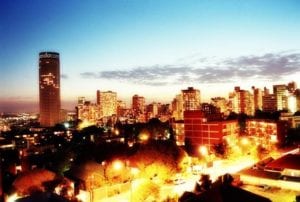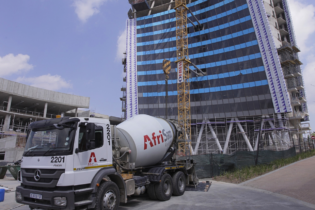Africa faces rapid urbanisation and as its population continues to grow unabated, more and more people are moving to cities every single day. The situation is no different in Gauteng, with thousands of people flocking to Johannesburg and other cities in the province every year to find work. The province’s population now stands at over 12.3 million people.
“Nowhere else on the African continent is this dynamic of rapid urbanisation more vividly displayed than right here in the province of Gauteng, a metropolitan province lashed by the winds of inward migration from neighbouring provinces, the SADC region and indeed the entire continent,” says Gauteng MEC for Infrastructure Development, Qedani Mahlangu.
“Creative and lasting solutions will need to be found to problems such as conditions of squalor in the province’s informal settlements, as well as environmental challenges such as the quality of the province’s water and air,” says MEC Mahlangu.
In line with the Province’s Vision 2055 the Gauteng Department of Infrastructure Development is working in collaboration with the Gauteng Planning Commission to craft the Gauteng Integrated Infrastructure Master Plan. The master plan will set out plans to enhance the quality of life of citizens in a globally competitive Gauteng city region. With the master plan, emphasis will be on ‘quality of life’ for Gauteng citizens, in contrast with other general infrastructure plans that often emphasise construction of projects, jobs to be created, and other economic spin-offs.“With our province’s vision, we are embarking on an ambitious, pioneering, and even bold social engineering project,” explains Mahlangu. “The plans takes a holistic look at the population trends of the province, factoring in the current land mass and use, reading the geopolitical and socio-economic milieu, as well as the technological and environmental innovations and using all of these to predict challenges of the future, and work out solutions in advance,” she says.
The Master Plan will be complemented with the creation of a provincial ‘Planning House’. The proposed “Gauteng Urban Planning and Exhibition Centre” will contain a scale model of the province with representations of each and every building in the city, every highway, railway, gas pipeline, data pipeline, electricity, telephone, rivers, water infrastructure and formal and informal settlements to assist with the ongoing master planning process. The concept has been used in other city regions that have adopted the master planning approach – notably Singapore and Hong Kong.
“With good infrastructure planning, we can over a period of a few decades raise the standard of life in Gauteng, and thereby enhance the continued attractiveness of this province to investors and professionals, looking for a place where their innovation and ingenuity can find expression,” maintains Mahlangu.








